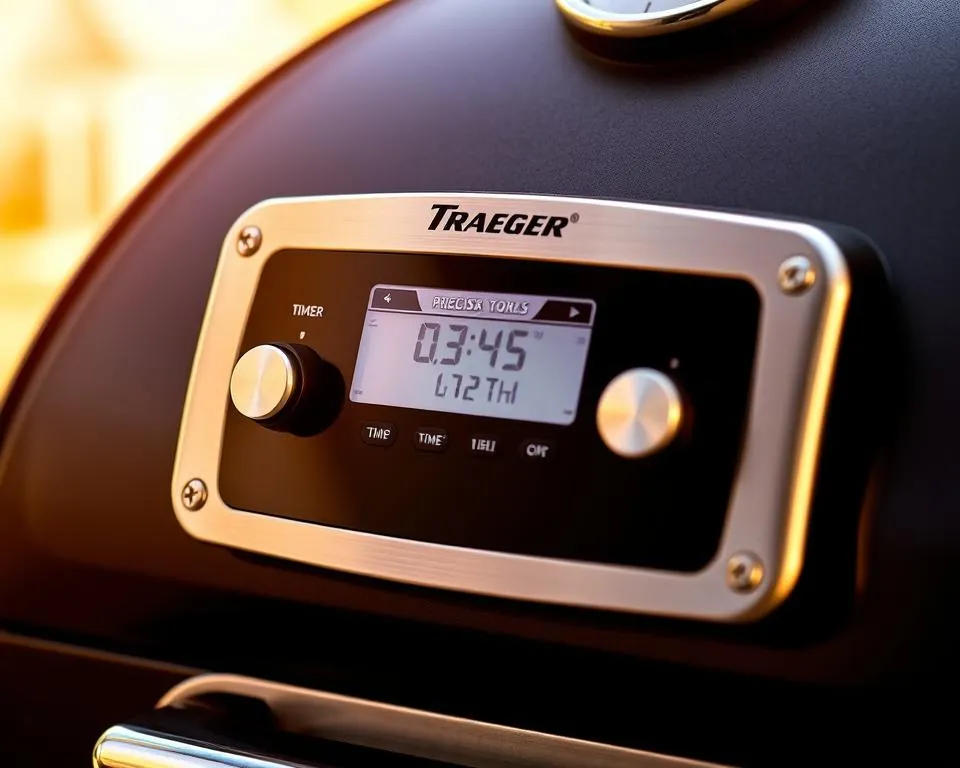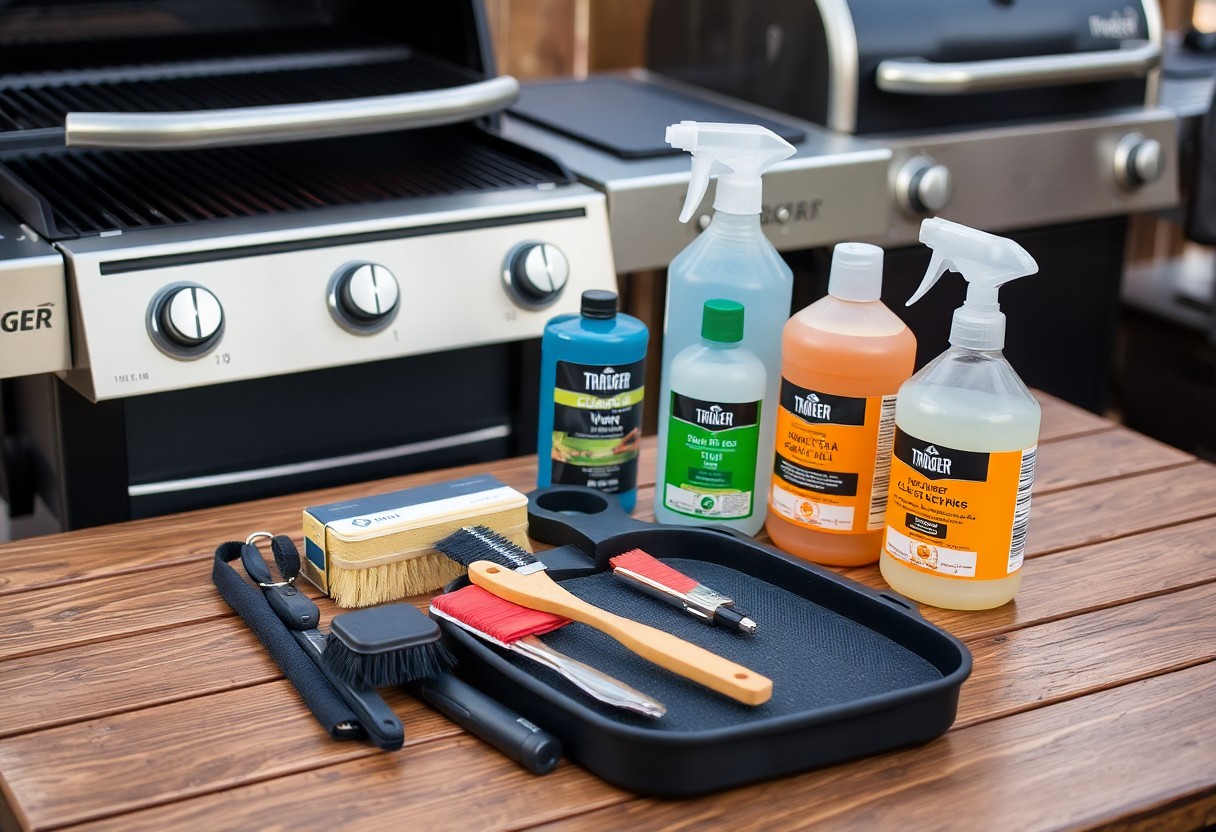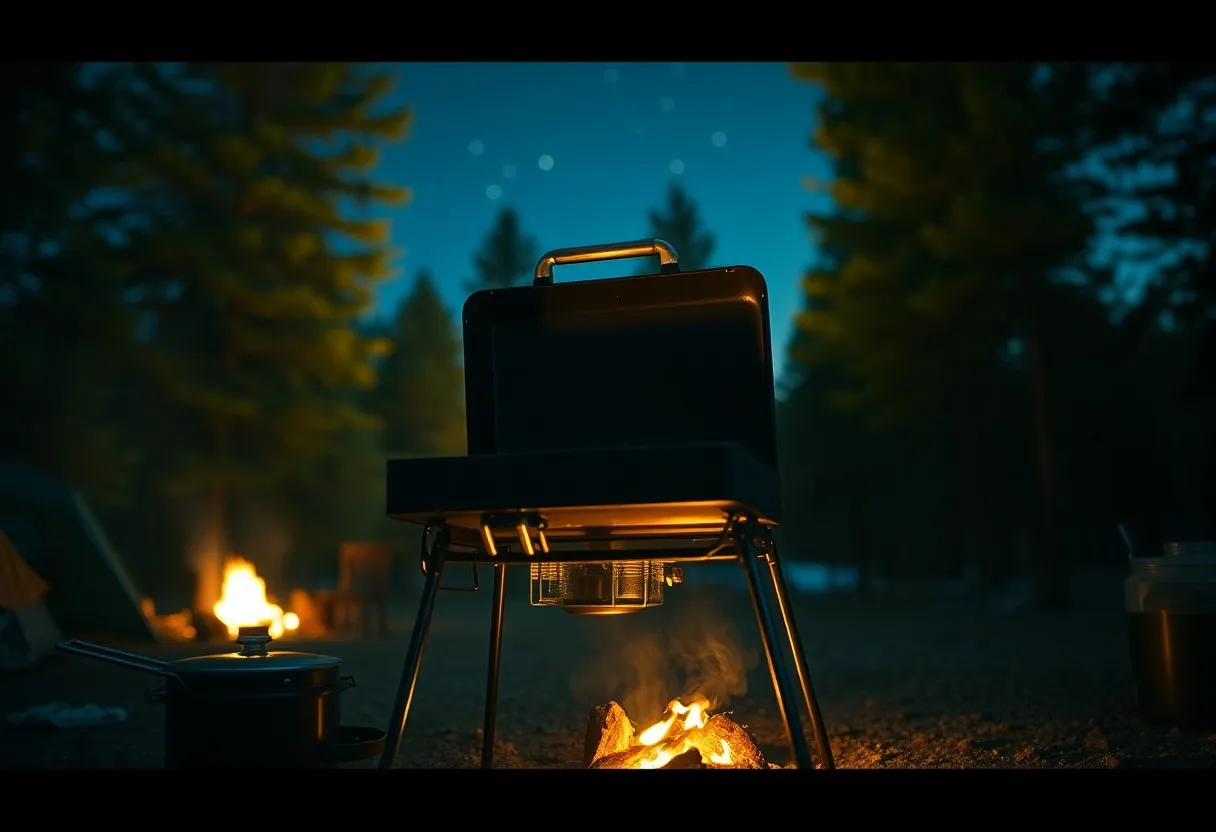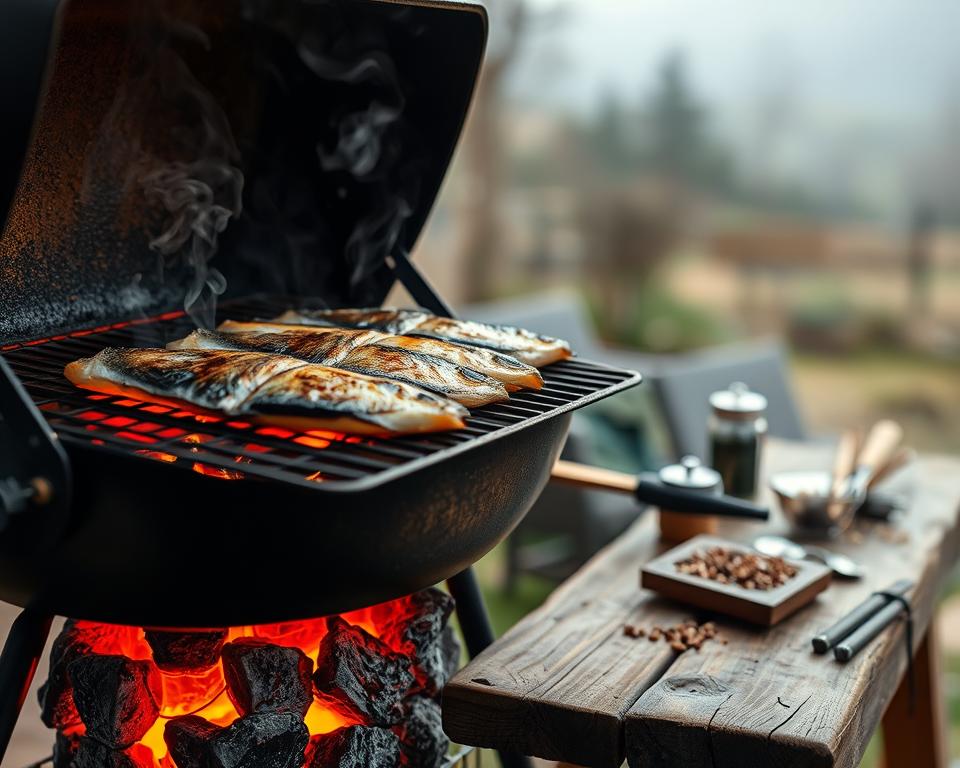Resolve Common Traeger Grill Problems. Did you know that approximately 70% of Traeger grill ignition issues are linked to power source problems? This includes faulty outlets or extension cords1. When your grill doesn’t turn on, it can be frustrating, but understanding the root cause can save time and effort.
Many grill issues stem from electrical components not functioning properly. For example, about 20% of users report needing to replace the fuse on their control panel due to ignition failures1. The controller, often referred to as the “brains” of the grill, plays a crucial role in its operation. If it fails, the entire system can be affected.

This article will guide you through checking the power cable, internal fuse, and connecting cables. Whether you have an older or newer model, these steps can help identify and fix the issue. By following these troubleshooting steps, you can ensure your grill is back in working order.
Resolve Common Traeger Grill Problems
Key Takeaways
- 70% of ignition issues are related to power source problems.
- 20% of users need to replace the fuse on their control panel.
- The controller is a critical component in the grill’s operation.
- Regular cleaning of the fire pot can prevent ignition failures.
- Proper troubleshooting can resolve 60% of grill issues.
Understanding How Traeger Grills Work
Traeger grills rely on a combination of mechanical and electronic components to deliver consistent heat. These systems work together to ensure optimal performance, making it easier to achieve the perfect cook every time. Let’s break down the key parts and their roles.
Key Components and Their Functions
The hopper is where wood pellets are stored. It feeds the combustion chamber, ensuring a steady supply of fuel. The auger transports these pellets from the hopper to the fire pot, maintaining consistent heat levels2.
The fan plays a crucial role in circulating air throughout the system. It helps maintain the ideal grill temperature by ensuring even heat distribution. Without it, the temperature could fluctuate, affecting cooking results2.
Role of the Controller and Temperature Sensor
The controller acts as the brain of the system. It uses data from the RTD temperature sensor to adjust pellet delivery and fan speed. This ensures the grill stays at the desired temperature2.
If the controller fails, the entire system may stop working. In such cases, a new controller might be needed. Customer support can guide users through the replacement process2.
| Component | Function |
|---|---|
| Hopper | Stores and feeds pellets |
| Auger | Transports pellets to the fire pot |
| Fan | Circulates air for even heat |
| Controller | Adjusts pellet delivery and fan speed |
| RTD Sensor | Monitors and reports temperature |
Understanding these components is the first step to resolving any issues. Whether it’s troubleshooting or replacing parts, knowing how they work ensures your grill stays in top condition.
Troubleshooting Common Traeger Grill Problems
When your outdoor cooking device fails to start, it’s often due to simple electrical issues. A systematic approach can help identify the root cause and get your appliance back in working order. Here’s how to tackle the most frequent issues.
Power Source and Outlet Checks
Start by verifying the power source. Ensure the outlet is functioning by testing it with an outlet tester. If the outlet is dead, check the circuit breaker to see if it has tripped2.
If the outlet works but the device still doesn’t power on, inspect the power cable. Look for frayed wires or visible damage. A compromised cable might need replacement2.

Internal Fuse and Circuit Inspections
Next, examine the internal fuse. On older models, the fuse is in a black cylindrical container, while newer models have a horizontally aligned fuse on the controller board2.
Look for signs of damage, such as black smoke residue inside the glass vial. A blown fuse indicates a tripped internal breaker, which might require replacement2.
Examining Cables and Connector Health
Finally, inspect the cables and connectors bundled under the bottom hopper. Ensure they are not frayed or damaged. A faulty connection can disrupt the entire system2.
Pay attention to the temperature sensor. Verify it’s accurately relaying heat information to the controller. A misbehaving sensor can cause errors in temperature regulation2.
By following these steps, you can identify whether the issue is a singular thing or requires replacing a faulty component. If problems persist, contact customer support for assistance under your warranty.
Resolve Common Traeger Grill Problems
Key Components, Maintenance, and Replacement
Maintaining and replacing key components is essential for ensuring long-term performance. Proper care and timely replacements can prevent major issues and extend the life of your equipment. This section covers controller replacement guidelines and preventive maintenance techniques to keep your system running smoothly.
Controller Replacement Guidelines
Replacing the controller requires careful attention to detail. Start by unplugging the unit to ensure safety. Remove the cable pairs and detach the temperature probes from the old controller. Attach them securely to the new one, ensuring proper connections2.
When sourcing a replacement, consider aftermarket options, which can cost around $40 compared to $100 for official parts2. However, using non-official components may void the warranty. Always contact customer support for clarification if unsure.
During installation, avoid damaging sensitive components like the sensor or connectors. Misalignment can lead to errors in temperature regulation. If the system doesn’t respond as expected one time, double-check all connections and consult the manual3.

Preventive Maintenance Techniques
Regular maintenance can prevent many issues. Inspect the internal fuse and cables bundled at the bottom of the hopper for wear or damage. Replace any compromised parts immediately2.
Pay attention to the firepot and switch. These components are critical for proper operation. Clean the firepot regularly to avoid buildup that can affect performance3.
Follow the manufacturer’s guidelines for maintenance. This includes checking the sensor and ensuring it accurately relays temperature data. Early intervention can save time and money in the long run.
| Component | Maintenance Tip |
|---|---|
| Controller | Replace if unresponsive or malfunctioning |
| Firepot | Clean regularly to prevent buildup |
| Sensor | Verify accuracy and replace if faulty |
| Switch | Inspect for wear and replace if damaged |
By following these guidelines, you can ensure your equipment remains in top condition. Regular maintenance and proper replacement procedures are key to avoiding costly repairs and extending the life of your system.
Resolve Common Traeger Grill Problems
Conclusion
Resolving issues with your outdoor cooking equipment can be straightforward with the right approach. By understanding key components like the fire pot and connection points, you can address most problems effectively. Whether it’s troubleshooting smoke or fixing ignition failures, a methodical check ensures reliable performance4.
Regular maintenance is essential to prevent recurring issues. Even after three years of use, proper care can keep your equipment running smoothly. If issues persist, seeking professional support is always the right step5.
Following these steps ensures your equipment works as intended. Share your troubleshooting successes with others and enjoy seamless outdoor cooking experiences.
FAQ
What should I do if my pellet grill isn’t heating up properly?
First, check the power source and ensure the unit is plugged in securely. Inspect the internal fuse and circuit for any damage. If everything looks fine, examine the temperature sensor and controller for potential issues.
How often should I clean the firepot and auger?
Regular maintenance is key. Clean the firepot and auger after every 20 hours of use to prevent ash buildup and ensure consistent performance.
Why is my grill displaying an error code?
Error codes often indicate a problem with the controller, RTD sensor, or fan. Refer to the manual for specific code meanings and perform troubleshooting steps like checking connections or replacing faulty components.
Can I replace the controller myself?
Yes, replacing the controller is straightforward. Make sure to disconnect the power first. Follow the replacement guidelines in the manual, and if unsure, contact customer support for assistance.
What’s the best way to maintain the hopper?
Keep the hopper clean and free of moisture. Store pellets in a dry place and empty the hopper if the grill won’t be used for an extended period to avoid clogs.
How do I check if the temperature sensor is working?
Use a multimeter to test the RTD sensor. If it’s not reading correctly, it may need replacement. Ensure the sensor is clean and properly connected to the controller.
What should I do if the fan isn’t running?
Inspect the fan for obstructions or damage. Check the power connection and controller settings. If the fan still doesn’t work, it might need a replacement.
Is the three-year warranty transferable?
The three-year warranty typically applies only to the original purchaser. Check the warranty terms or contact customer support for clarification.
How can I prevent pellet jams in the auger?
Use high-quality pellets and avoid overfilling the hopper. Regularly inspect the auger for blockages and clean it as part of your maintenance routine.
What’s the best way to troubleshoot ignition issues?
Ensure the firepot is clean and free of debris. Check the ignition rod for wear and replace it if necessary. Verify the power supply and controller settings are correct.




Leave a Reply